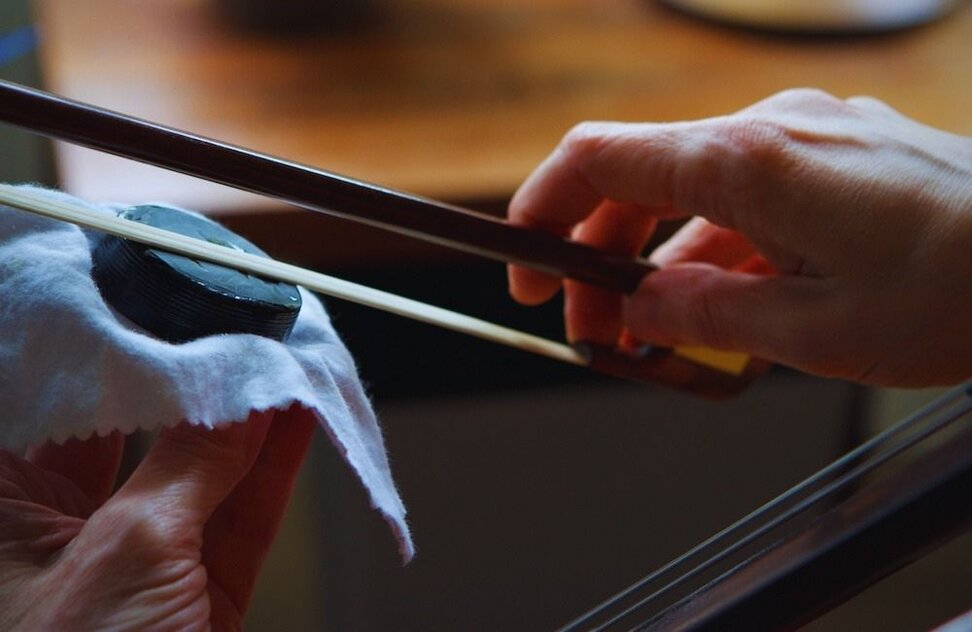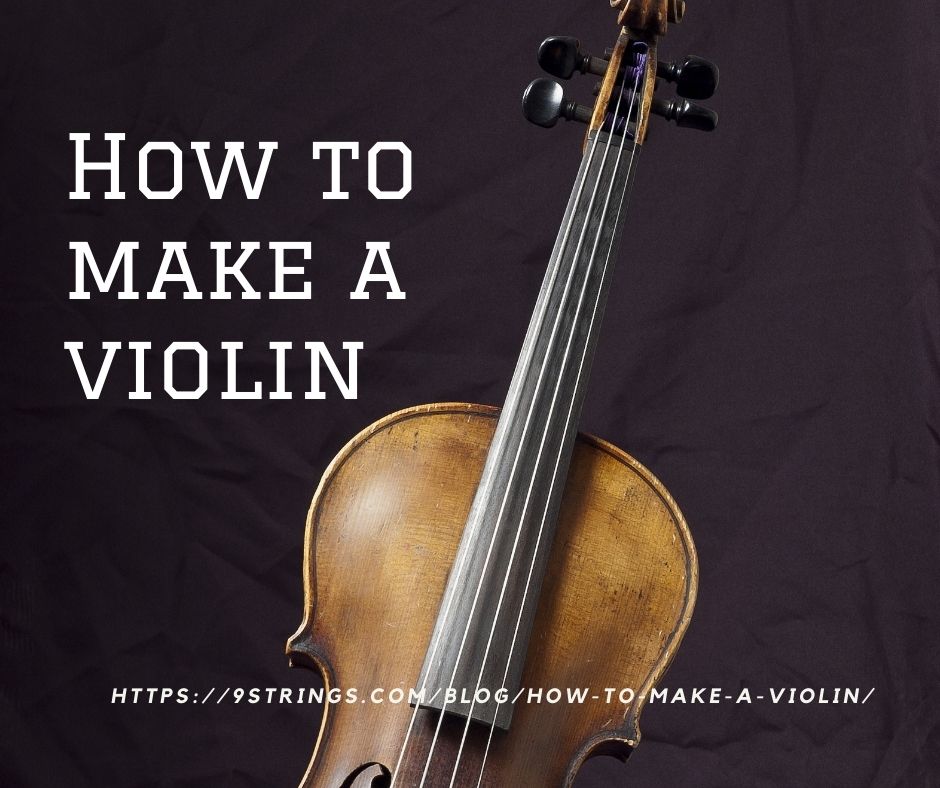The various types of violin were invented by the Lombardy luthiers in the 16th century. Now the violins are available in different shapes and designs. Though the basic parts of the instrument are the same, they are slightly different in application and construction. However, these tiny modifications may create a difference in the performance of violins. For example, fiddles have a flat bridge and they can produce less acoustic sound compared to other instruments that have curved bridges. The variations of violins also depend on some other factors like the brand, quality of wood, country of origin. Even whether a violin has a single or two-piece back also plays an important role to vary the quality of the violin’s sound. However, there are three main ways to categorize violins. These are:
1. Time
2. Genre
3. Size
Generally, the violins can be split into different types based on these three categories. Here we will like to explain when and how these violins differ from each other.
Different Types of Violin by time
First of all, we will categorize the violins by time. Here is a brief explanation:
Pre-Baroque stringed instruments
Most historians believe that the modern violin evolved in the early 16th century. However, the different bow-stringed instruments of the 15th and 16th centuries contributed a lot to the development of the contemporary violin. Pre-baroque-era stringed instruments used different types of instruments such as vielle, rebec, and the lira da braccio. Though sometimes these are considered as separate instruments in their own right, these are occasionally referred to as early types of violins. These stringed instruments are slightly different from the violins we are using today. Especially their positioning style was different from the contemporary violins. The lira that was mainly used during the Byzantine Empire, was held upright. On the other hand, the string instrument player usually holds the lira-de-braccio against the chin. But The three-stringed Violetta was held under the chin like a violin.
Baroque violin
The Baroque violin is considered the first standardized violin. It is the forefather of the classical or modern violin. The Baroque violin was made in the 16th century and triggered the musical revolution at that time. During this era, the art of making stringed instruments reached an all-time high. Still, they are inspiring the modern violin world. These musical instruments are highly desirable to violin players even today. Some models of the Baroque violin even sell for millions of dollars at present. Famous violin makers including Amati, Antonio Stradivari, and Guarneri are from this era. This variety of violins mainly has a shallower and thicker neck angle. This type of neck angle can support the string tension very well. The string tensions of this type of violin are even lower than classical ones. However, many traditional crafting standards of this type of violin have been changed in the 18th century. To fulfill the new standards many of these original Baroque instruments were altered at this time.
Classical violin
These types of violins are also referred to as the modern violin or the acoustic violin. It was developed in the late 18th and early 19th century when the bow-string instruments were getting popular with the music composer. During this period, new bowing techniques were introduced which increased the violin’s string tension. This new technique created a new style of sound projection. This unique sound tone made the classical violin stand out from the other types of violins. This new technique of sound presentation increases the string tension and thus wider the range of sound projection of the violin. Generally, the classical violin has a slender neck and higher string tension. Gradually it becomes the benchmark or standard version of a violin. The manufacturer made the classical violins with different types of wood. Many new and comfortable techniques were developed in different periods. For example, chin rest was developed to aid the violinist in the 19th century. Chinrest helps the violin player to hold the violin against the neck comfortably. It stops the violinist from dropping the violin when changing from one position to the next. Better strings and rosins are other remarkable addition of classical violins that improved the quality of classical violins. Nowadays different types of comfortable fittings have been also included to make the violins more comfortable for violinists.
Stroh violin
John Stroh made a special type of violin in the late 19th century. Later it was popularized as the Stroh violin among violin lovers. It is also known as the horn-violin or violinophone due to its special design. This type of violin has a horn instead of a sound box to create the notes. So, the timbre is quite different from an acoustic or classical violin. Stroh violin can produce louder sounds as it has a horn. It is quite similar to the Romanian horn violin. But the horn on the Romanian horn violin is narrower than the Stroh violin. However, some violin players don’t like its harsher sound. Due to the thinner sound, it is not as popular as acoustic violins. This type of violin is also relatively expensive. This might be another reason that it is not widely accepted by violin players.
Electric violin
It is another type of violin that produces sound electronically. It doesn’t require a sound box or f-holes to create sound. Nowadays electric violins are found in many sizes, shapes, and forms. Many models of electric violins are different from the traditional aesthetics design of acoustic violins. Though musicians have used violins with pick-ups since earlier, the electronic violin was first sold in the 1930s. It is getting popular among the young generation over the last few decades. It is commonly used in jazz music and different stage concerts. Musicians can distort the sound of the instrument with amplification while using the electronic violin. This distortion process can allow music composers to alter the sound with pedals and other electronics. It has opened a new window for music composers to exercise violins sounds in many innovative ways.
Semi-Electric violin
It is also known as the violin with a pick-up. This type of violin produces sound acoustically. It is a traditional violin that is fitted with a pick-up. With the help of this type of violin, musicians can electronically amplify the acoustic sound. The sound of this type of violin ensures more acoustic feeling than the fully electric violins. It can retain the original acoustic tones and for this reason, it is called an electric-acoustic violin. As it doesn’t need to plug into an amp, it doesn’t sound loud as an electric violin. Some classical violins can be fit easily with pick-ups while some models require few modifications to set up the pick-up. Some classical violins require a hole in their body to install a plug-in.
Silent violin
The silent violin is not truly silent as to its name. In fact, it is a special type of violin that produces the sound of the bow touching the string. It is an electric option and a comparatively new addition to the modern violin family. The sound of this violin is similar to a normal classical violin in mute mode. Sometimes the sound of violins can bother the people around music learners. Especially at the starting stage of violin playing learning, learners need to practice more at their home or school. This type of violin allows beginners to practice without bothering others. The sound quality of this violin may not be suitable with an amplifier. But it can be easily set as ideal for earplugs. Generally, people purchase this type of violin for practising at their learning stages.
Different Types of Violin by Genre
Some violins have been specifically modified to produce a particular musical tone. These violins can be categorized by genre. Here is a brief explanation:
Fiddle
The term fiddle often refers to a general type of violin. It is most commonly used in country or folk music. It has a flat bridge that allows the player to perform double or triple stops while playing. This type of bridge is more comfortable to perform than a classically arched bridge. During the ancient period, the term “fiddle” was used as a slang word to explain the playing of a bowed stringed instrument. Nowadays fiddle is used as a general term to describe a violin. Ideally, there are no huge differences between violins and fiddle. More or less they both are the same instruments. Mainly the context and style of playing make the difference between these two instruments. The fiddle was popular among people of lower classes and traditionally played at different Italian events like funerals, birthdays, and weddings. People of lower classes also played fiddle on any special holidays. Fiddle music was also popular in some places of America and many European countries like Scotland, Poland, England, Hungary, and Romania.
5-String violin
As the name suggests, it includes a 5th string called the C string and is placed below the G string. It can be either electronic or acoustic. This type of violin combines the features of violin and viola in one single instrument. It opens a new opportunity for the music composer and increases the range of variation to create multiple sounds with a single instrument. However, in the beginning, the violin players faced some difficulties to use this type of violin as the bow touches a specific string can change the tone. But it adapts country fiddle music perfectly. It allows the violin players to create a variation on music composition by playing two to three strings at a time. By decreasing the angle between strings, the violinist can fill out the sound with lower notes. It makes it easier to perform double and triple stops while playing.
Viola
This instrument can be played almost in the same way as the violin. But it is larger and can produce around a fifth lower. Just like the second violin, it plays the “middle voice” in an orchestra. Viola also can be used in solo concerts. Many music composers like this instrument for its deep and warm tones. It is also ideal for adult violin learners. As the scores of this instrument are slightly easier, so it can be played easily in group practice.
Different Types of Violin by Size
The violins can also be categorized based on their sizes.
A full-size violin is known as the four-quarter violin while other sizes of violins are known as fractional violins. Because the different sizes of the violin are recorded as fractions of a full-size violin. Fractional violins can be found in different sizes. It can be as small as 1/64. But these smallest size violins are very rare. The smallest violin widely popular is the 1/16th. It is basically used by children aged 3-5. As the length of the child’s arm is relatively short so small size violins are much comfortable for them. Violin sizes above 1/16th are generally known as “quarter-size”. These are available in different sizes like 1/10th, 1/8th, 1/4. The 1/2 size violins are known as half-size while the 3/4 size violins are called three-quarter. However, it is important to know that A 1/4 violin isn’t a quarter of the size of a 4/4 violin. The difference between a 1/4 violin and a 4/4 violin is actually around an inch. People select the desired violin based on their arm’s length.
Conclusion
There are some other types of violins like cello, violone, and double bass that can be included in the violin family. Cello is a larger instrument with a lower pitch. It is generally played upside down between the knees. The violone is a very rare instrument that is larger and lower than the cello. Now it is replaced by the double bass in the symphony orchestra. The double bass is not really a part of the violin family. Rather it is considered as the member of the older family of viola da gamba. It is an instrument with sloping shoulders. Though these are mainly used in the symphony orchestra, now it is popular in jazz and other various styles of music.



